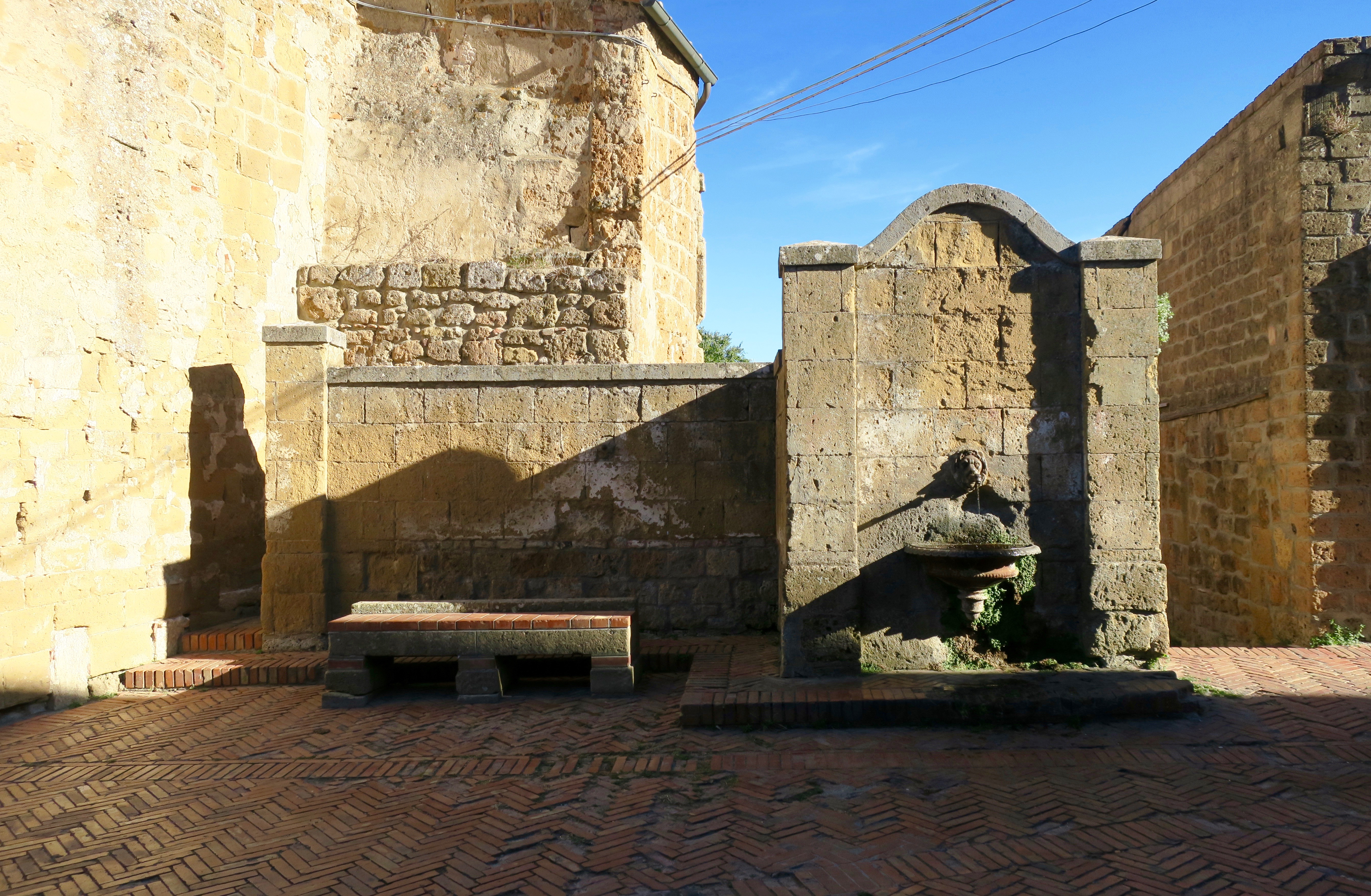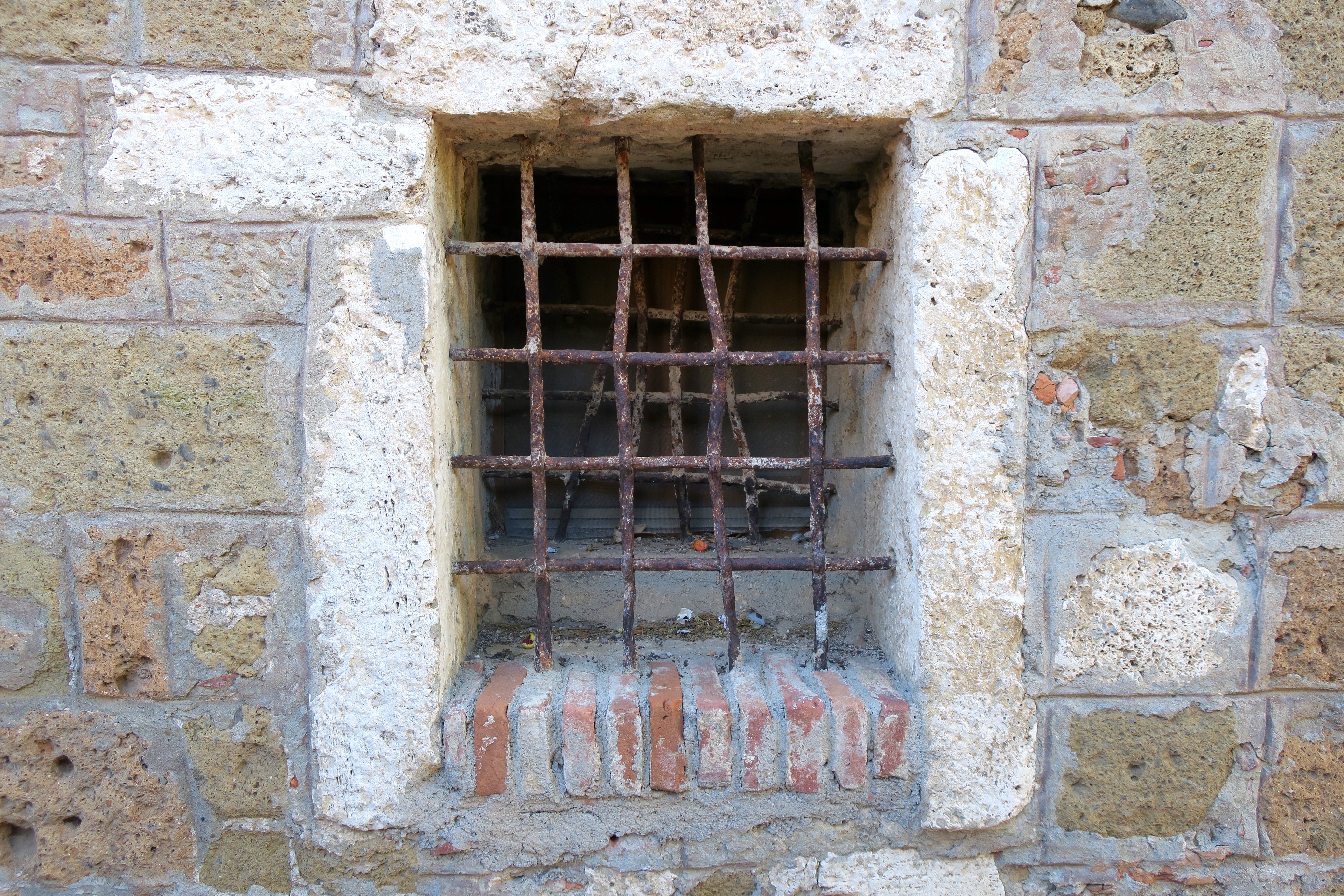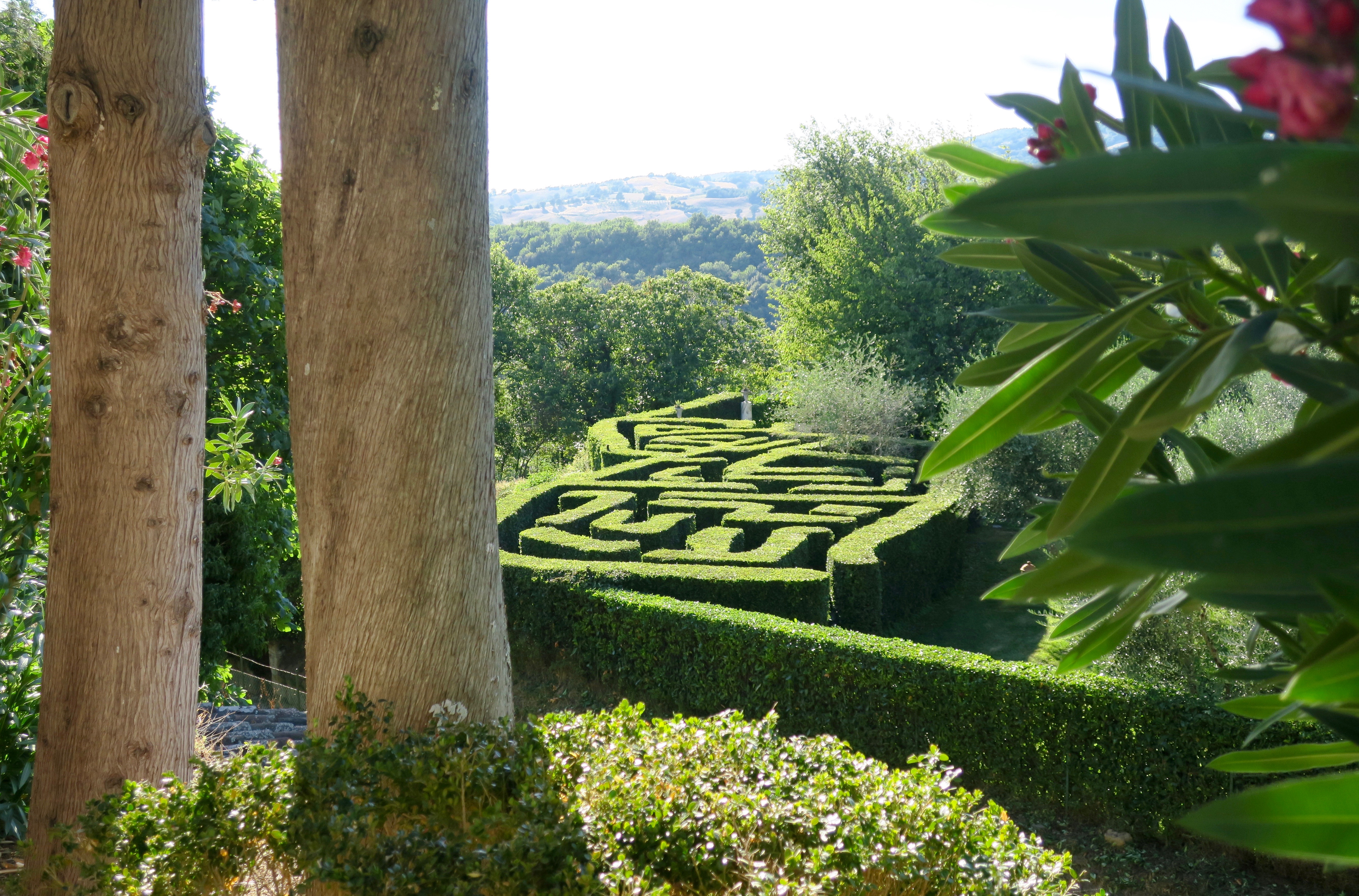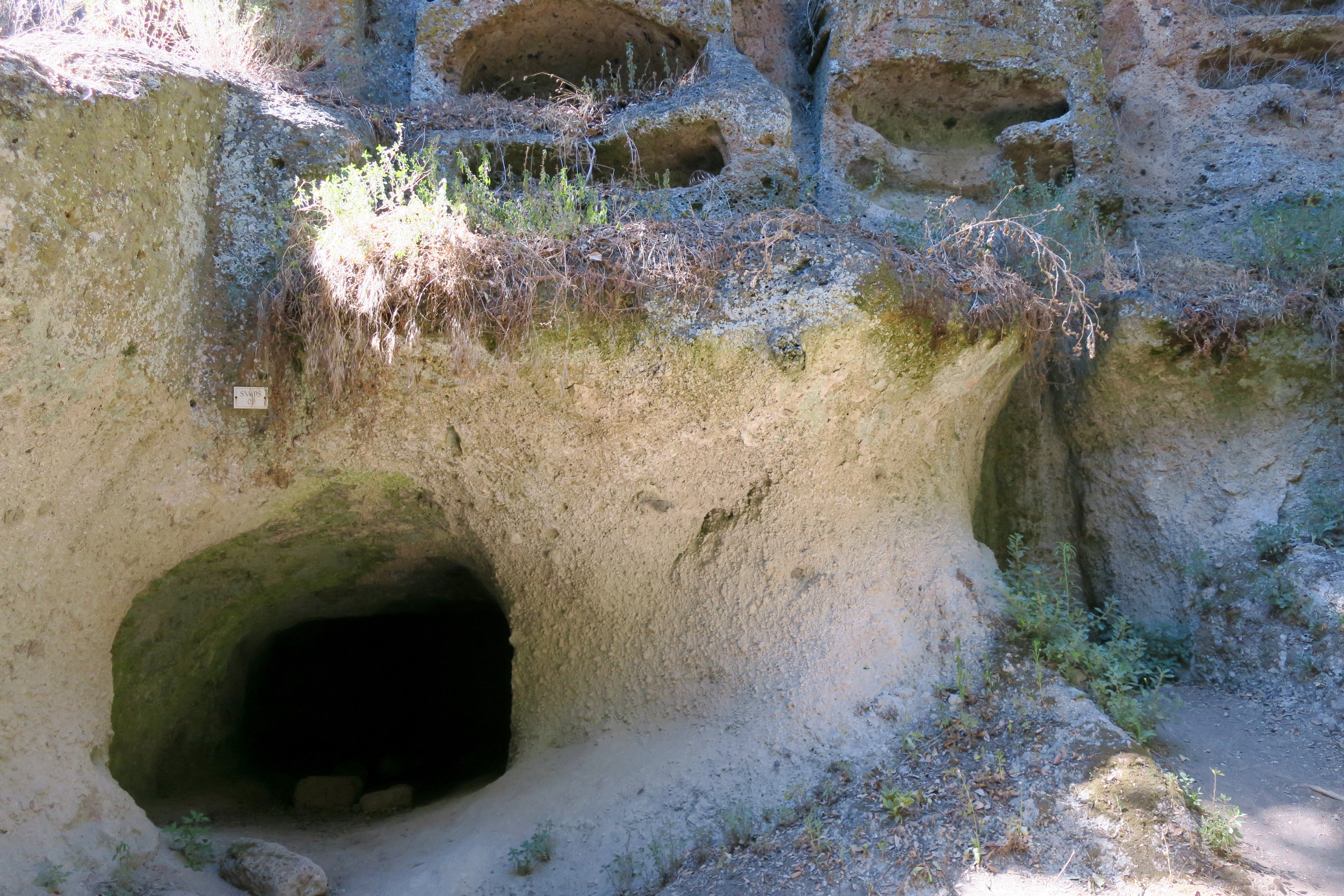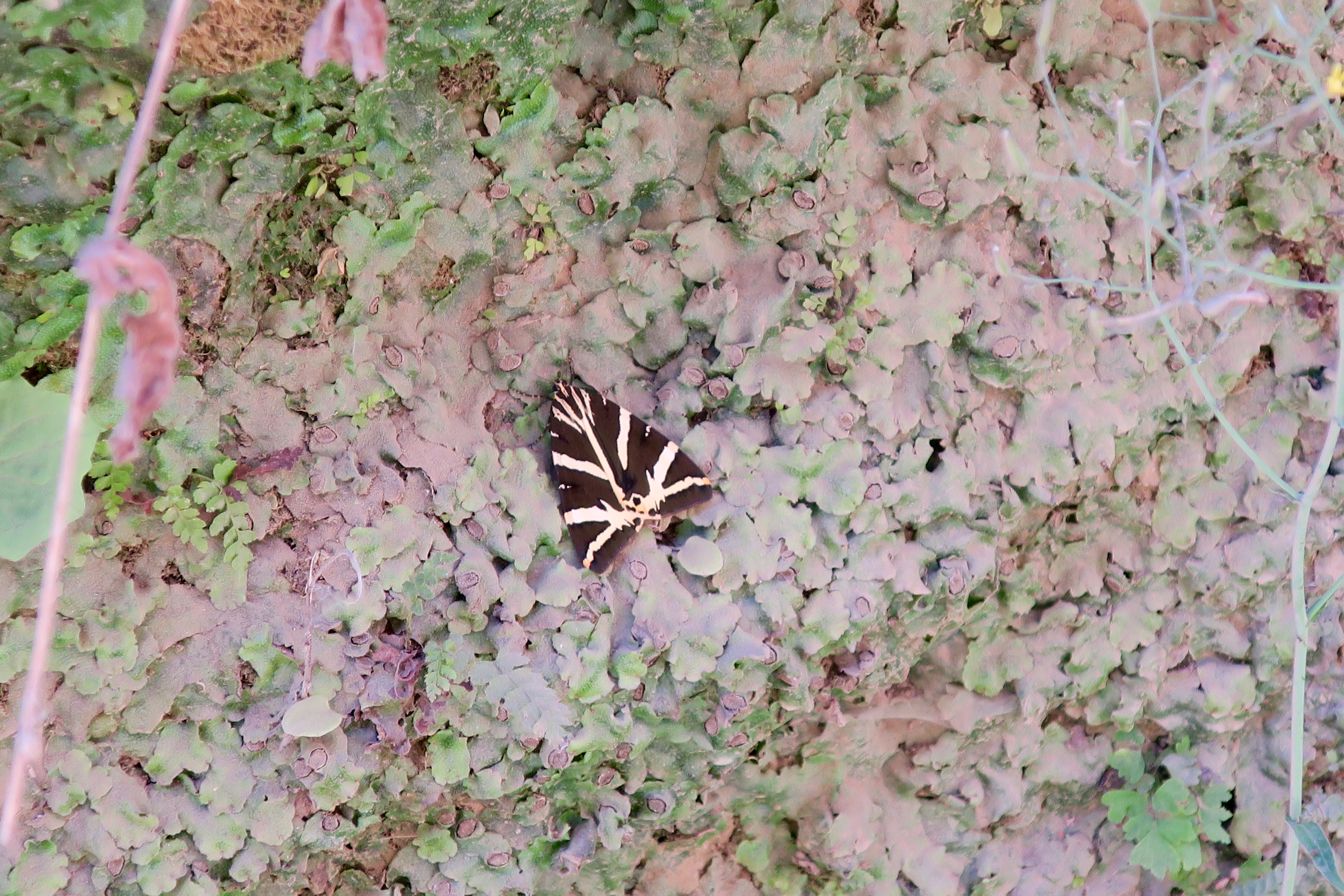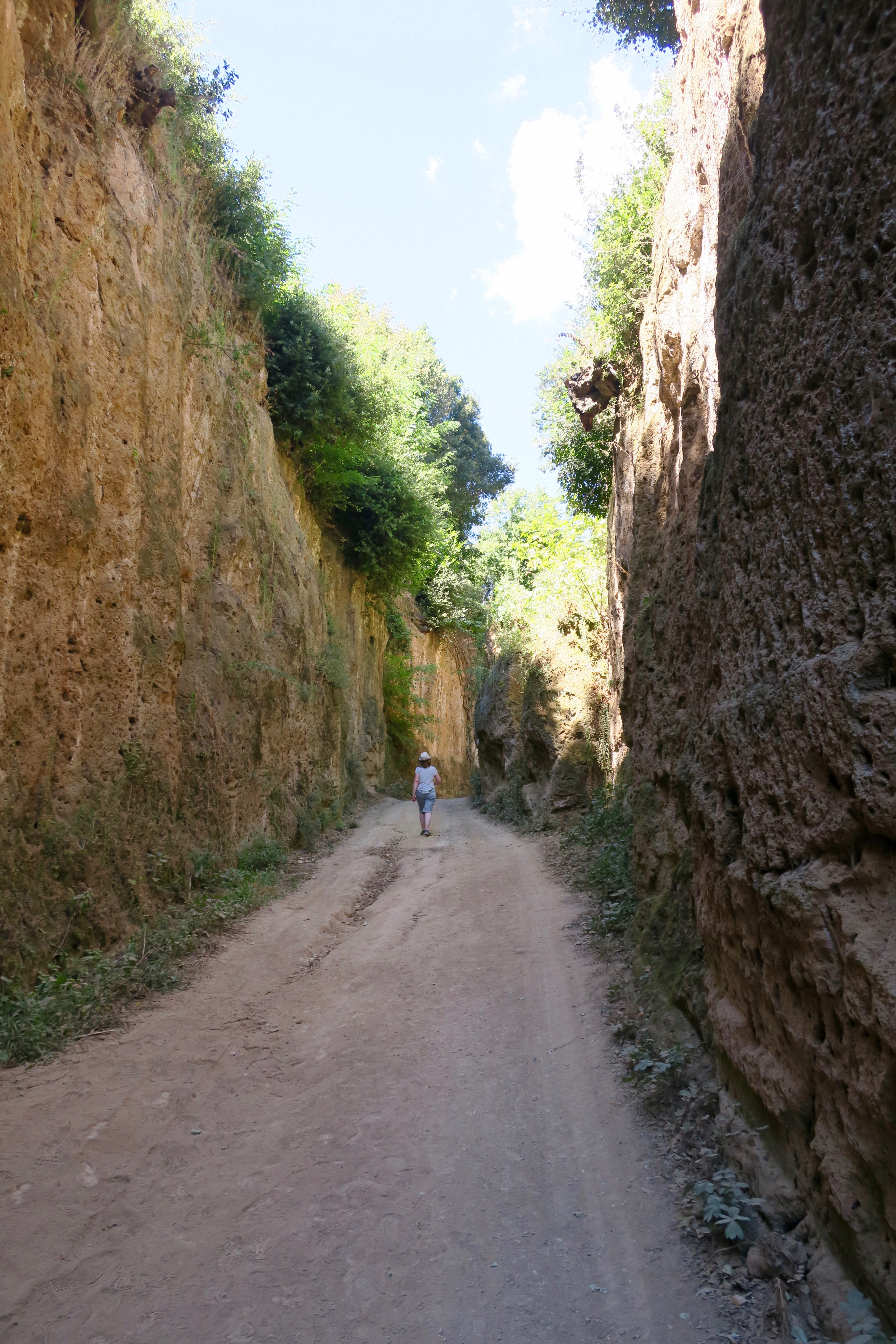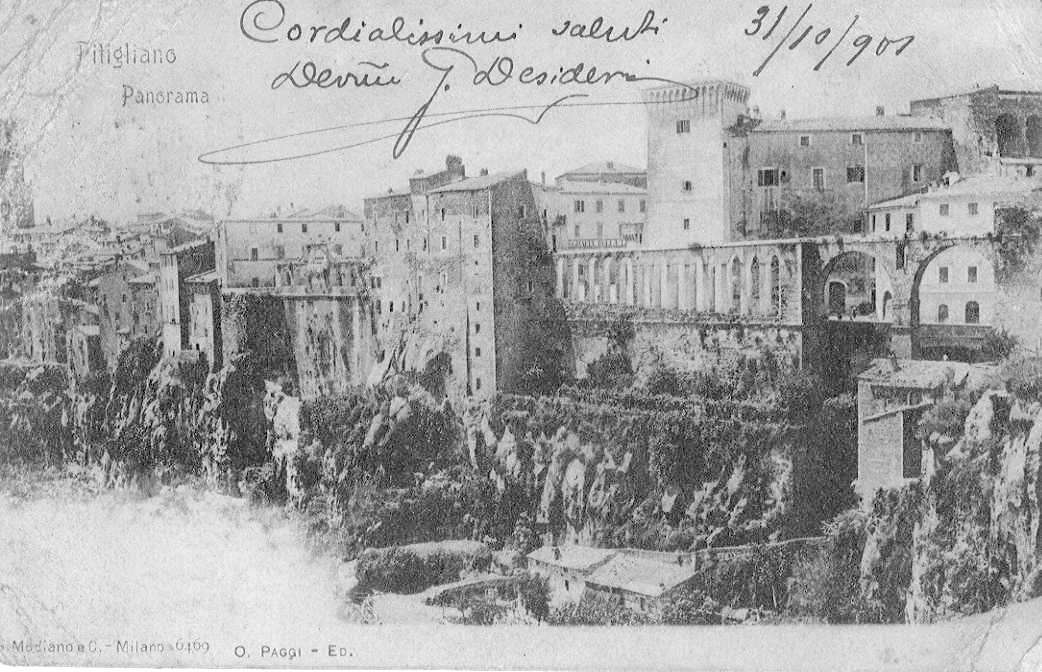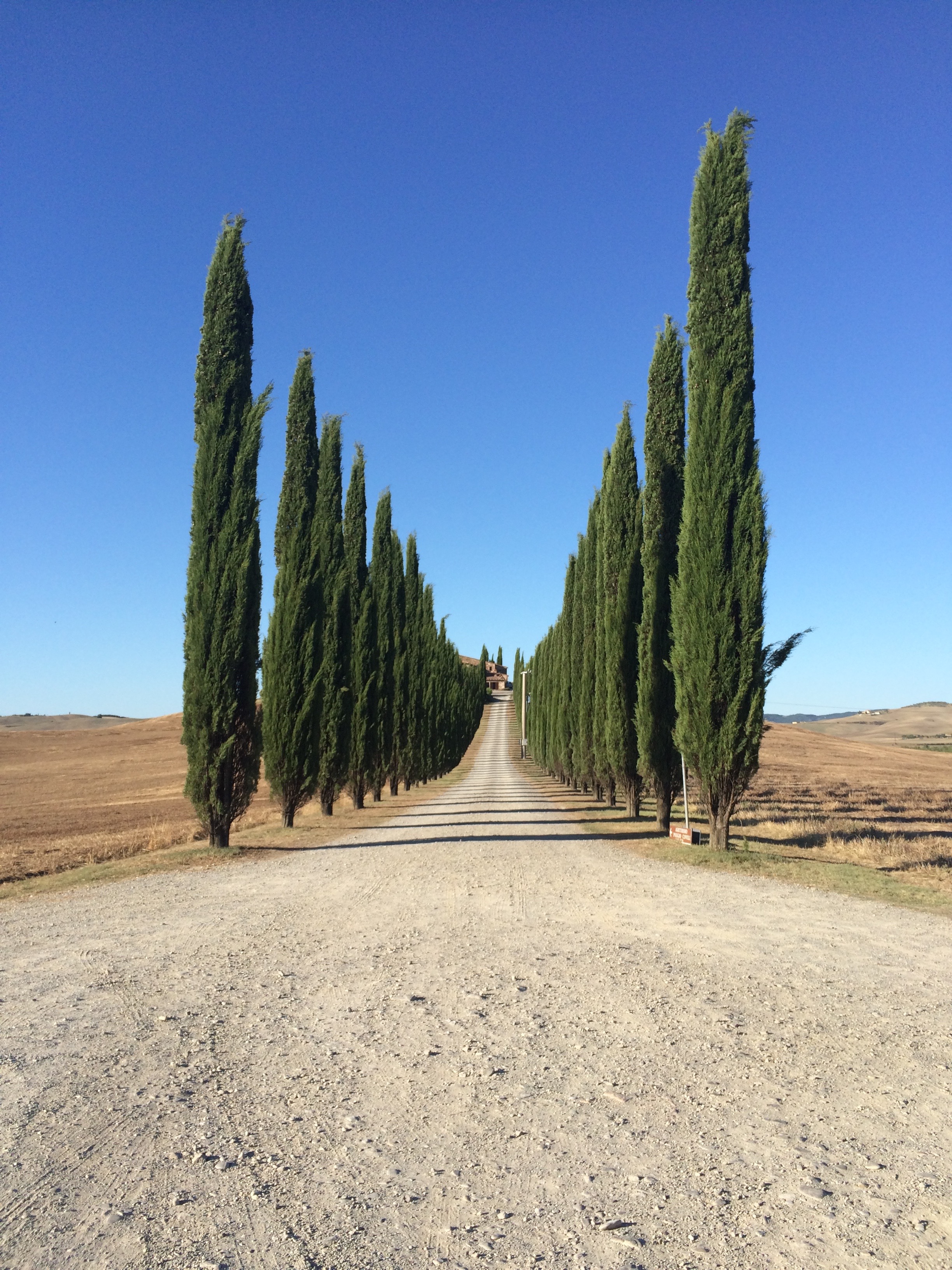From Saturnia it’s a short drive to Sovana, a small village with just a single street, beautifully paved in herringbone brickwork. There’s a ruined castle at one end and a cathedral at the other, and a piazza in the middle where we ate delicious lemon pizza for lunch.
Sovana is a village with a single brick-paved street running from the castle ruins to the cathedral. It is in a beautiful position on a ridge overlooking a wide panorama. An important Etruscan settlement and later a Roman ‘municipium’, it became a bishopric in the 5th century. Its period of greatest importance was in the 13th century, when it was the seat of the Sovana branch of the Aldobrandeschi family. It then passed under the control of the Orsini and was conquered by Siena in 1410. Attempts to repopulate the village when under Medici rule were doomed on account of malaria. Today it is very much tidied up and given over to the reception of tourists, with many of the old houses now turned into hotels, restaurants, and shops selling mainly tourist paraphernalia. However, the cathedral is one of the most beautiful buildings in the area.
Alta Macadam: Blue Guide Tuscany
A persimmon tree in the castle ruins.
※
The woods around Sovana are rich in Etruscan necropoleis, mostly rock tombs of the 3rd-2nd centuries BC, but varying greatly from simple cave-like excavations to more grand and elaborately ornamented architecture, all carved out of the volcanic tuff rock.
Tomb of Hildebrand
This 3rd century Etruscan tomb takes its name from Pope Gregory VII, born Ildebrando di Bonizio Aldobrandeschi in Sovana c.1020. There is no connection between the pontiff and the sepulchre; it was named after him for no better reason than that he was Sovana’s most illustrious son. The tomb is a temple-sepulchre, with the burial chamber underground and an elaborate superstructure in the form of a temple raised above it… Today there is only one survivor of the original 12 fluted columns that supported the portico (six in front and three at either side). This portico was flanked by stairways, still visible… The entrance tunnel to the burial chamber below survives intact. The funeral bench remains in situ, as does the well-preserved stone coffered ceiling.
Alta Macadam: Blue Guide Tuscany
Scilla – Tomb of Demons
After escaping the burial chamber of the Tomb of Hildebrand and surviving a close encounter with a winged siren serpent, the next temptation was the entrance to Poggio Prisca, the sacred path that connects the realm of the living with the realm of the dead. An enchanted zone of shadows and light.
Other tombs are reached by Etruscan passageways through the rock. Known as ‘Vie Cave’, these extraordinary deep roads are carved like narrow canyons into the tuff, and have an eerily fascinating atmosphere. Debate still rages as to whether these were drovers’ routes or whether their function was cultic: roadways of the dead, linking the necropolis with its living city, along which Vanth, winged goddess of the Underworld and ‘psychopompos’ (guide of spirits), would escort the deceased from life to the world beyond.
Alta Macadam: Blue Guide Tuscany
We climbed the ancient hand-carved holloway to the top of the hill, emerging into the light surrounded by grapevines, where we were given a sign, Fine Percorso, and a U-turn arrow.
I turned around and made my way back down into the cool shade.
And a characteristic trait of Etruscan spirituality is a desire to somehow enter the earth,
to penetrate below, perhaps to find some definitive knowledge or eternal abode.
All of the tombs, even the most humble cavities have been catalogued and marked with a numbered label. Throughout the whole Città del Tufo the woods are riddled with hundreds of Etruscan tombs.
Tomb of Typhon
An aedicule tomb with tympanum and portico from the 2nd century BC, takes its name from a sculpture inside that depicts the mythological monster…
The ‘Tomba del Tifone’ is surmounted by a triangular tympanum decorated with reliefs, from which a sharply jutting head emerges, which has been subject to different interpretations. On the facade, between a fluting bereft of bases and capitals in the true sense of the word, a large rectangular niche opens out featuring a ceiling decorated with lacunars filled with lozenges. Traces of plaster indicate its original polychromy.
A little further down the hill is the largest and most impressive of the Vie Cave (Hollow Roads).
The Via Cava del Cavone, which runs within the necropolis of Sovana. Because it is so large, researchers have theorised that it was the most important path; it is certainly one of the most evocative. In the early 1900s, a small altar was found at the path entry, with a series of votive statuettes. Halfway down the path is a religious image that post-dates the Etruscan era. Known as a “devil chaser”, it supposedly protects passers-by. Also visible is the written Etruscan word “vertna”, which is the last name of a noble family, and a carved swastika which probably is a stylized representation of the sun.
There are also windows carved here and there, high up on the walls overlooking the road.
Down below there’s a natural microclimate, home to a surprising variety of mosses, lichens and ferns.
Tuff, or tufo, is a light porous rock formed by the consolidation of volcanic ash. It is relatively soft and extremely easy to work, with an apparent fragility that hardens when exposed to the elements. This might explain how it was possible to cut these deep holloways with nothing but hand tools, but it doesn’t account for why they were made. Sheltered within their steep walls we felt closer to the earth, our echo quickened and briefly we possessed the space. This was our communication channel with the planet. We offered our wordless prayers and we received its silent blessing. We were made welcome.
FINE PERCORSO
Once again at the top of the hill we turned around and retraced our steps.
Embraced
Enlightened
Protected
Defended
Back down at the beginning I spied another window high up in the rock wall, and then I noticed steps in the undergrowth beneath the overhanging cliff, leading me to a hidden path around the back and up and into the cave, so that I could now look out of the window and down onto Il Cavone from where I was just a moment before looking up…
We’d seen the Vie Cave, these magnificent Hollow Roads, on screen just a few months earlier in Matteo Garrone’s spectacular Tale of Tales, but not known what they were nor where they might be.
It’s a fantastic film, a fairytale for adults, described by Peter Bradshaw in the Guardian as ‘a dark carnival of freaky myths’. There are great performances from wonderful locations all around Italy.
It was good to discover the Vie Cave by chance and experience their power for ourselves at first hand.
※
Pitigliano is spectacularly sited on a rocky spur overlooking a gorge on all sides, excavated by three torrents. The approach across the plateau from the west is the most dramatic: the town comes into view unexpectedly at a turn, spread out along a ridge parallel to the road, its houses more or less the same colour as the tuff rock on which they are built and the fields at the foot of the outcrop untouched by new buildings. It is especially dramatic in the morning light, and for a moment one might have the impression that one is in Morocco. The town is still a lively place, and the resourceful inhabitants make use of the tuff rock for their garages and workshops, and use little ‘Ape’ vans to negotiate the extremely narrow streets.
Alta Macadam: Blue Guide Tuscany
From Sovana we came down to Pitigliano, a town of narrow winding streets and many little antique shops. In one I found a beautiful Kuba textile of appliquéd panels, an alternative map of the town…
It’s a labyrinth to be memorised and unravelled in your head. You can walk around town seeing the sights, then later, in bed drifting off to sleep, replay the video in your mind’s eye. It’s easy to recall. There are steps and staircases, archways and ginnels, corners and crossings. It’s a place to inspire paintings of tunnels and mazes and maps, paintings that take a line for a walk and enjoy getting lost.
And on the way home, a more iconic kind of Tuscan holloway,
a cypress avenue, a green Via Cava, an Etruscan superhighway.



